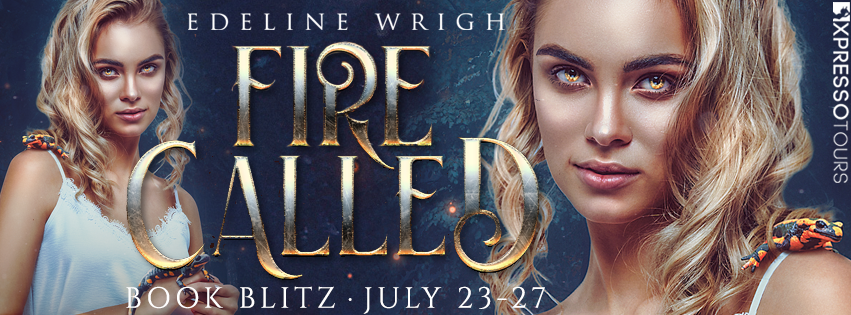Too Dark to Sleep
Dianne Gallagher
ISBN 978-0-985954-109
Brayer Publishing, LLC
November 19, 2012
Avid readers of crime fiction, noir or psychological thrillers will find Too Dark to Sleep a fresh take on their favorite genre. This is the first book in a gripping new series and introduces the wholly unique antihero, Maggie Quinn.
“Too Dark to Sleep is a brilliant, well-written novel... Maggie Quinn is an incredible main character, multifaceted and strong despite setback after setback… This riveting story tells of Maggie's battles with a brilliant "bad guy" and with the darkness that threatens her after her breakdown. The suspense in this story is first-rate from its opening pages to the story's conclusion and makes Too Dark to Sleep a spine-tingling book that readers everywhere will adore.” – Alice DiNizo, Readers Favorite (5 Stars)
“In the vein of Jeffrey Deaver thrillers, Dianne Gallagher’s Maggie Quinn will draw you in and have you following her every move as she desperately battles her own demons while trying to outmaneuver a mind-game-playing killer.”
“Looking forward to the next. I’m anxious to see where the author takes Maggie.”
Character is everything.
I really can’t even think of starting a project without a protagonist I can connect to. Now, that’s not saying I can’t write a word until I have a complete character. It takes a lot of time to layer and create someone who’s not only interesting, but unique. Maggie Quinn wasn’t complete for a long time. I walked around with her and kept trying to jam her into stories that just weren’t a good fit. I tried the crime genre and things fell into place.
Female characters in crime novels have a history of either being described by their lingerie and lipstick, being drawn as hyper-masculine… basically a guy in a dress… or being one of many incarnations of stereotypical living furniture.
In Too Dark to Sleep, I was trying to create a unique female character who had a balance of what are traditionally considered female and male trait. She needed to be as complex and complete as any guy in crime fiction. I found the real key to this was not writing Quinn as a woman, but as a person. That simple. She is defined by her abilities, her intellect and her… well, intestinal fortitude. Not by her love life. Not by her face or her body. A lot of readers I’ve talked to ask what Quinn looks like. I purposely don’t describe her physical appearance much. It isn’t important. As readers, you know what you need to know and you fill in the rest. Some see Quinn as short and blonde. Others as tall and dark-haired. And you know what? That’s okay. It doesn’t matter . I describe the way she dresses because it ties to a lot of psychological elements. It’s important for the reader to know that she wears long sleeves and that her clothes are baggy… and why. We don’t know if she’s tall or short, but we do know she’s not who she used to be. So when she decides to tear into her ex-husband or a suspect… or a burly prison inmate, there’s a risk she won’t come out on top.
If you want to survive, you have to evolve.
I’m not a fast writer. Okay, not exactly true. I can put out a first draft fairly quickly, but I love rewriting. To me that’s where the real craft comes in and where the characters find themselves. They gain layers over time and those layers make them complete, dimensional individuals. Quinn didn’t start out with her fear of the dark, but adding that element really twisted things in a very interesting way… and gave me a new character. The dark, itself. Also, the gum snapping. Something as small as that made a huge difference in the cadence of the character. It became a way for Quinn to punctuate thought without having to slow the pace. It’s those details, those layers, which make characters live and breathe and make pages write themselves.
Late arrivals are often the most fun.
Sometimes other major and minor characters emerge as the protagonist develops. Rainey grew closely alongside Quinn. As her character morphed, his responded. Other times, the best people appear in a late rewrite or just kind of pop up when I need another body to move things forward. Harley wasn’t in the first few drafts of the manuscript, but as I got more familiar with Quinn and the plot pushed forward… well, I needed someone she could more easily connect with and who would be an unquestioning ally. He came late to the game, but was great fun to write and I look forward to bringing him back later in the series.
Most writer loves crafting those complex, leading characters. But I’ll tell you, minor characters with no huge arc are the most fun to write. There’s so much freedom because you know they won’t be there for the whole book or the entire series. It’s not that they’re disposable… they’re just low maintenance. Like a good friend you know you can count on and who never really demands much from you, but is still a whole lot of fun.
Not everyone gets invited to the party and, sometimes, those you invite don’t show up.
It’s true. There are those characters you sweat and toil over, only to realize they are in the wrong place or maybe in the right place at the wrong time. I’ve got a file filled with scenes containing characters I hope will fit in somewhere down the road either in Quinn’s series or in another. It’s tough to cut them out, but it always makes the manuscript better. On the flip side, some characters just fight you the whole way. I’ve been rewriting Indigo, the first book of a second series, for well over a year… and I just now looped into the protagonist. Since my writing is character-driven, that translates into a whole chunk of time floundering with someone who just wasn’t who they needed to be. Luckily, a little walking around and ruminated allowed the right character to finally emerge and, hopefully, the manuscript will be done later this spring.
It’s not always easy, but once you craft the right character, everything just seems to fall into line and the pages write themselves. I always know when I’ve got the person I need because I can put him or her anywhere and the words just flow and the plot moves. That’s the power of really strong characters. They work for you . They make you a better writer. And that’s how I feel about Too Dark to Sleep’s Maggie Quinn. She makes the work very easy.
Life is Never a Straight Line
Growing up in rural Minnesota, Dianne attended the University of Minnesota where she got a BFA in Theatre. Although her initial interest was in performance, Dianne eventually focused on playwriting and had competition-winning scripts performed at that school.
After moving to Los Angeles so her husband could attend film school, Dianne switched focus to screenplays. While writing her own spec material, Dianne formatted, edited, critiqued and wrote independent scripts. While in Los Angeles, she was approached by writer Karen Hall and asked to edit and mentor a young writer Hall discovered while doing research on death row inmates. The professional relationship which lasted several years gave Dianne a unique look into the prison system and into the individuals sitting on death row.
A move to the Chicago area translated into a new focus on novels as well as a love for the big-shouldered city. Dianne edited, critiqued and ghosted a variety of fiction and nonfiction pieces while having great fun with her family. As projects she worked on were placed with agencies like Writers House, Dianne decided to start writing for herself. The result is the debut novel, Too Dark to Sleep,













































































































